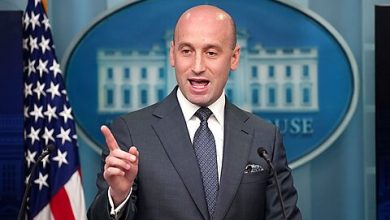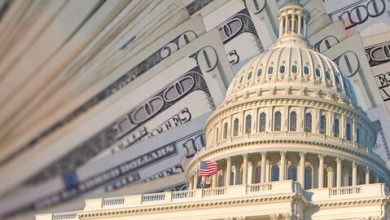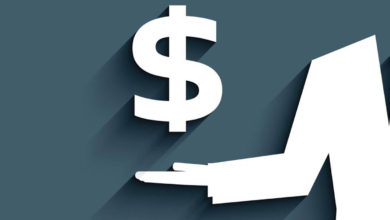Emergency Spending and the Erosion of Congressional Fiscal Norms

Romina Boccia and Dominik Lett
Irresponsible emergency spending practices have eroded fiscal norms, contributing directly to America’s mounting debt challenge. Over the last three decades, Congress designated 1 in 10 dollars of federal spending for emergencies. Most of this emergency funding was provided through deficit spending with no plan to pay down the accumulated debt with future surpluses. Myopic spending practices harm the fiscal credibility of the federal government, elevating the risk of a devastating fiscal crisis.
On May 3, Cato hosted a Hill briefing featuring panelists Veronique de Rugy (Mercatus Center), Kurt Couchman (Americans for Prosperity), and Cato’s Romina Boccia (that’s me!), moderated by David Ditch (The Heritage Foundation). Together, we delved into America’s deteriorating fiscal trajectory, recent episodes of emergency spending, the erosion of fiscal norms, and budget reform. We are grateful to all who attended. Here are some insightful excerpts from our otherwise not‐public discussion.
Irresponsible Emergency Spending Habits Have Eroded Fiscal Norms
Since the 1990s, Congress has spent roughly $12 trillion on emergencies (plus an extra $2 trillion, including associated interest costs). That’s equivalent to roughly half of the $27.5 trillion public debt. Most of that spending, especially recently, hasn’t been offset in any meaningful way. This stands in stark contrast to most of the nation’s history, where legislators generally followed informal fiscal norms.
One Hamiltonian fiscal norm is that emergency spending can be paid with borrowed funds, assuming it will be repaid later. Many major emergency borrowing episodes before the 21st century, including World War II, followed this norm. Borrowing skyrocketed to fund the war effort, and legislators maintained primary surpluses for years after the conflict ended to reverse the growth in the debt.
This norm has eroded significantly in more recent decades. Even between the Great Recession and the pandemic, there are notable differences in the national dialogue over budgetary responsibility. Following the 2008 financial crisis and the subsequent fiscal stimulus, policymakers engaged in a national debate on austerity. Legislators on both sides of the aisle and President Obama worked together to put together a fiscal reform package that constrained spending.
Not only was the fiscal stimulus significantly larger in response to the pandemic than was the case for the Great Recession, but efforts to rein in spending have been far tamer by comparison. A lackluster spending cap deal and repeated emergency spending supplementals are two major reasons why the federal deficit is reaching unprecedented new heights. As Veronique concluded,
“It’s because we followed these budget norms that US treasuries have become the cornerstone of the financial world. Losing that is at risk. And how you lose this is by borrowing money without ever talking about repaying your debt.”
The Fiscal Trajectory Is Dire before Considering Emergencies
Debt is set to surge over the next three decades. According to CBO, public debt as a share of GDP will exceed the World War II record high in just four years (2028). This high debt will slow the economy and reduce American incomes.
Worse still, CBO’s projections don’t assume the realistic possibility of another war, pandemic, or other emergency in the next 30 years. Should the deficit continue to grow at an unprecedented rate, the US may not be able to respond adequately to a future crisis. As I noted,
“We are going to have unexpected emergencies, but we don’t have the fiscal space to fund the programs that are already on the books, let alone respond to major emergencies which we should be able to do. One of the most important features of a nation‐state is to be able to defend itself when under attack, and the nations that survive major wars are those that are able to borrow during times of crisis. We are hamstringing our ability to do that by borrowing during peacetime in a way that will eliminate our ability to borrow when crisis calls.”
In the last year, several weak Treasury auctions have indicated lower investor demand for government bonds. At some point in the future, investors may decide treasuries are not worth the risk at prevailing interest rates. Such a scenario could quickly spiral into a fiscal crisis with catastrophic implications for the US economy. As Couchman pointed out,
“I think the inherent challenge with all of this is we’re not going to see it coming. We see some indicators. We saw Moody and Fitch downgrade the rating, downgrade the outlook. We’ve seen the IMF, World Bank, CBO, OMB, and everyone else in the world be like, ‘Woah, things are getting pretty bad; we better do something.’ If you’re tearing down the mountainside in a mountain bike, when do you know you’ve gone off the cliff? It’s when you’re dropping really fast, and then you’re screwed.”
Unlike what happened in Europe when Greece suffered a debt crisis in 2009, there is no equivalent to Germany to bail out the US should the fiscal situation go south, noted de Rugy. Indeed, if America faces a fiscal crisis, it’s not just Americans who will suffer the economic consequences. A US debt crisis will likely manifest as a crisis of global proportions.
Designing Better Budget Controls
Kurt Couchman outlined three main principles that should guide budget reforms:
First, “You want things to be neutral. If it’s not something that will get broad support from Republicans and Democrats, or at least most of them, you’re not going to get it passed, and it’s not going to stick around.”
Second, “Reforms have to be comprehensive. Our budgeting is very piecemeal. That disjointedness is a lot of the reason for the dysfunction that we’re seeing.”
Finally, “You need to have fiscal targets that are reasonable, stable, and predictable.”
The Responsible Budget Targets Act introduced by Rep. Emmer (R‑MN) and Sen. Braun (R‑IN) (H.R.7420 and S.772, respectively) is a good example of a sensible budget reform. Alongside establishing realistic spending caps, the bill would implement emergency offsets over a six‐year period. Establishing an offsetting mechanism gives appropriators the flexibility to address emergencies when necessary while also incentivizing forward‐thinking budget planning. Additional legislative proposals can be found in the PDF below or in Couchman’s Townhall article.
Sensible and commonsense budget reforms can improve the appropriations process and reduce the risk of a debt‐driven fiscal crisis. It is up to us, the American people, to cultivate a culture where deficit spending and irresponsible fiscal practices are the exception, not the rule. Congress will follow the wishes of its electorate.





